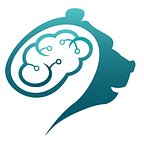The New Focus 1 Headband
By Daniel Sun
Is there finally a solution to the sleeping student in class? Will the teacher finally become powerful enough to pinpoint exactly which student happens to be gazing down at his or her cell phone screen at any given moment in time? As such questions regarding student engagement have been on the minds of teachers since the advent of schooling, one company offers a seemingly surefire yet morally questionable solution to this age-long dilemma.
This company is BrainCo, with their motto of “Your brain controls everything.” This time, a lot of the “control” will be going to the teachers themselves, as BrainCo rolls out the new Focus 1 headband, which will be worn by all students in the classroom. This headband is capable of using EEGs, tests that record electrical patterns in your brain, to translate brain signals into an attention level ranging from 0 to 100, 0 being a general lack of attention and 100 transcending to a state of absolute intense concentration.
On the surface, teachers will be capable of monitoring the attention levels of each of their students real-time, including the numeric attention level each student is at. At the end of each class, students will be able to see the classwide average of their concentration and how they compare to the average.
Above shows a possible interface showing the level of attention of a student throughout the day.
The primary motive behind this creation is to motivate students to pay closer attention during class, and perhaps, allow teachers to know which students to call on when their attention levels fall low. BrainCo research scientist Max Newlon lists three ways of improving outcomes of education. He states, “The first is quantity of time spent studying and the second would be the quality of teaching. We want to introduce a third dimension, efficiency, which we can quantify by measuring the activity going on in your brain.”
This EEG device primarily works through detecting three different brainwave patterns in the human brain. It can detect theta waves, which range from 3 to 8 Hz, and occur during sleep and in states of deep meditation. It can also detect alpha waves, from 8 to 13 Hz, which occur when the brain is in an awake yet relaxed state. Such waves can surface while daydreaming, meditation, or exercising cardio, among other occasions. Lastly, beta waves are the most common during the daytime, and at a frequency of 12 to 30 Hz, they are most frequent while one is focused on problem-solving and cognitive tasks. Averaging the presence of the three waves, the device generates a quantity that estimates the attention level of the individual wearing it.
While the most apparent criticism of this device likely stems from its sense of intrusion of privacy into the students, some critics holds doubts as to whether this device even works properly in the first place. Theodore Zanto, a director of the UCSF neuroscience program mentions that while EEG scans can determine a user’s attention levels, it is incapable of differentiating what the user is actually focused on. He describes, “I haven’t seen any data indicating you can dissociate if someone is paying attention to the teacher or their phone or just their own internal thoughts and daydreaming.”
Even though the moral repercussions and technical unreliability of this new classroom device likely hinders its ability to set stage into any actual school, the research going into how EEG’s can accurately evaluate an individual’s focus and mental state can likely find itself beneficial in a variety of other fields. From the creation of neural dust at Berkeley that can detect neural firing to the research in “typing on a computer using the brain,” there are many applications of neurotechnology that have yet to be fully developed.
Sources:
